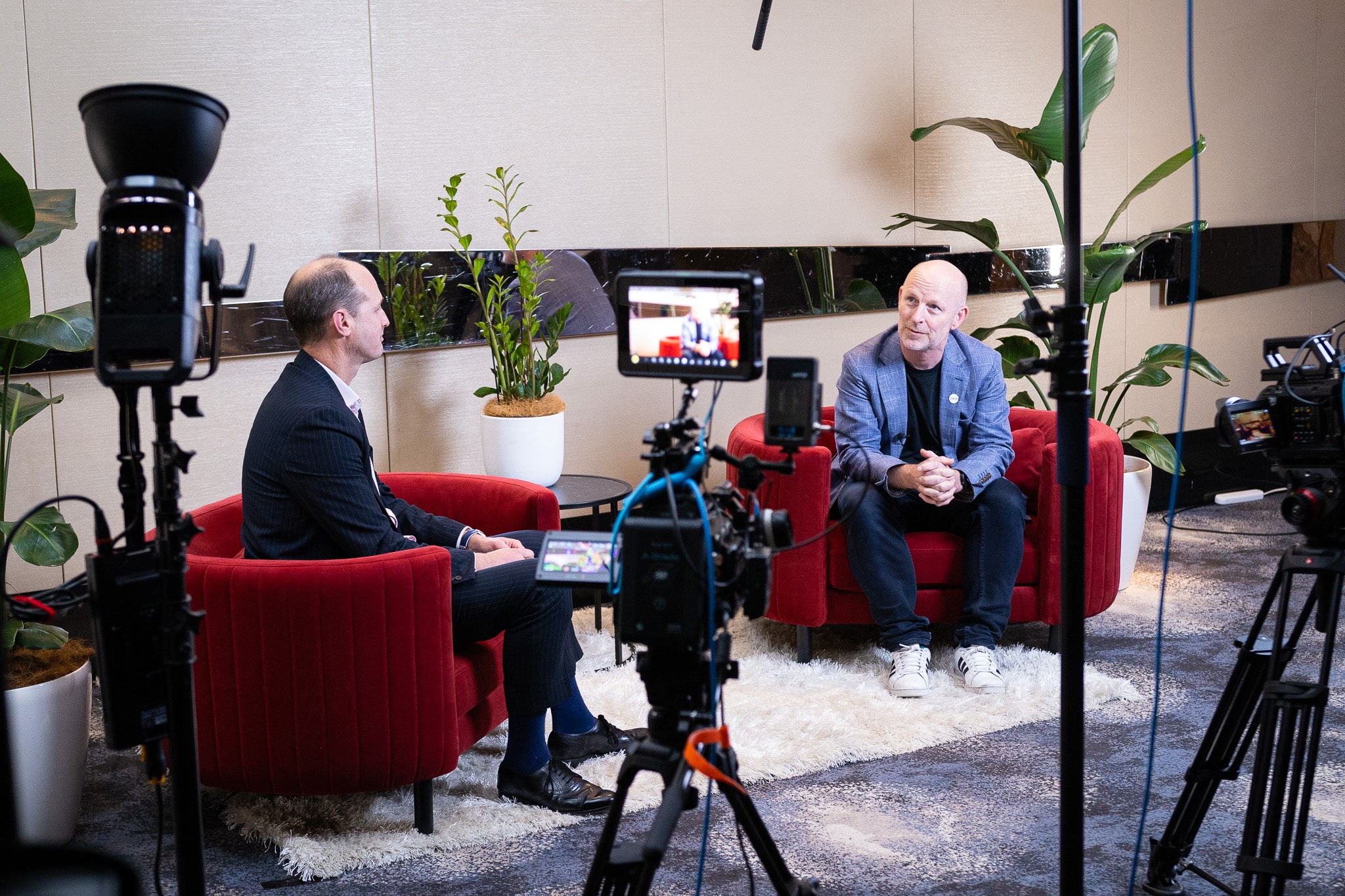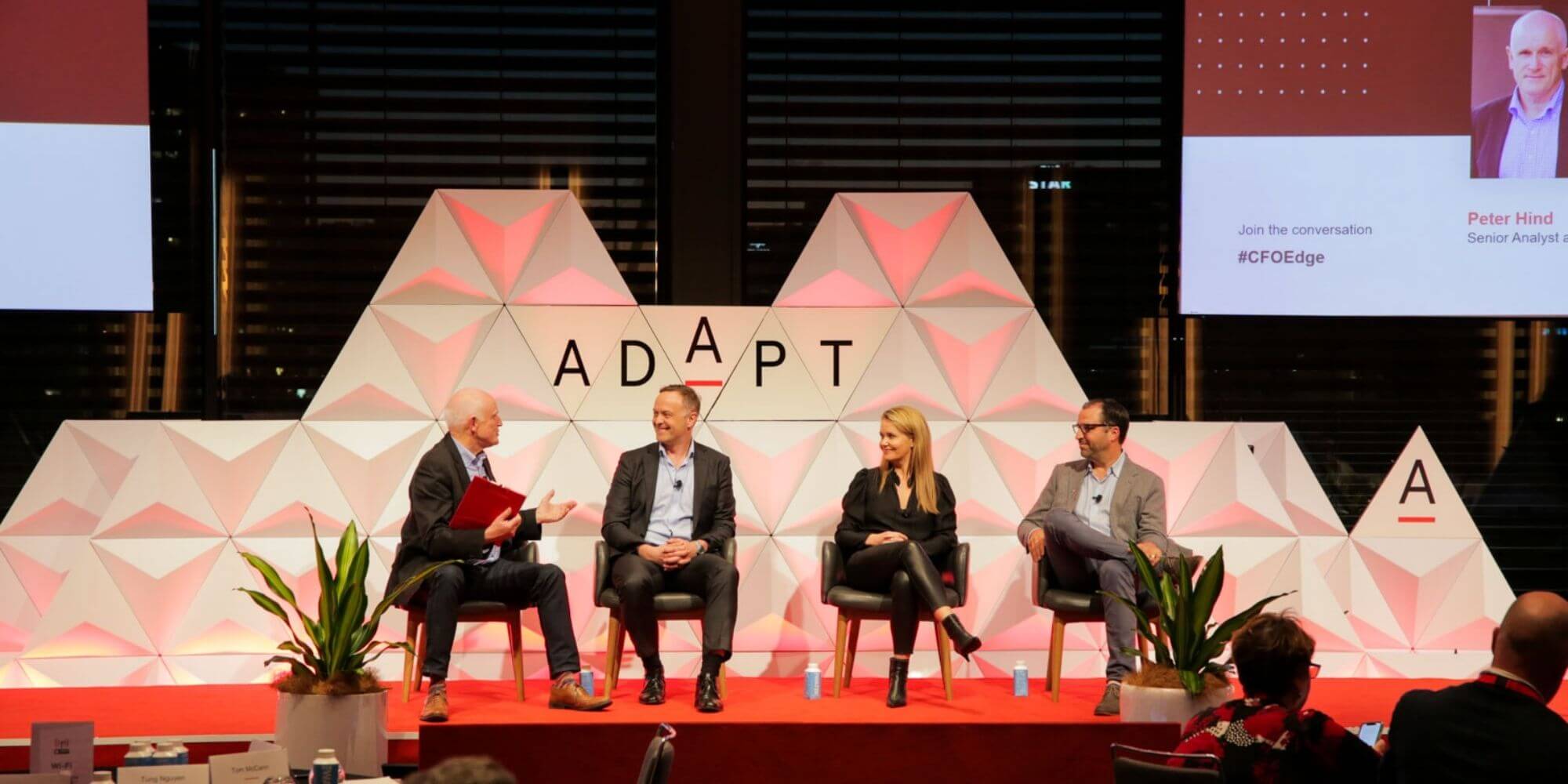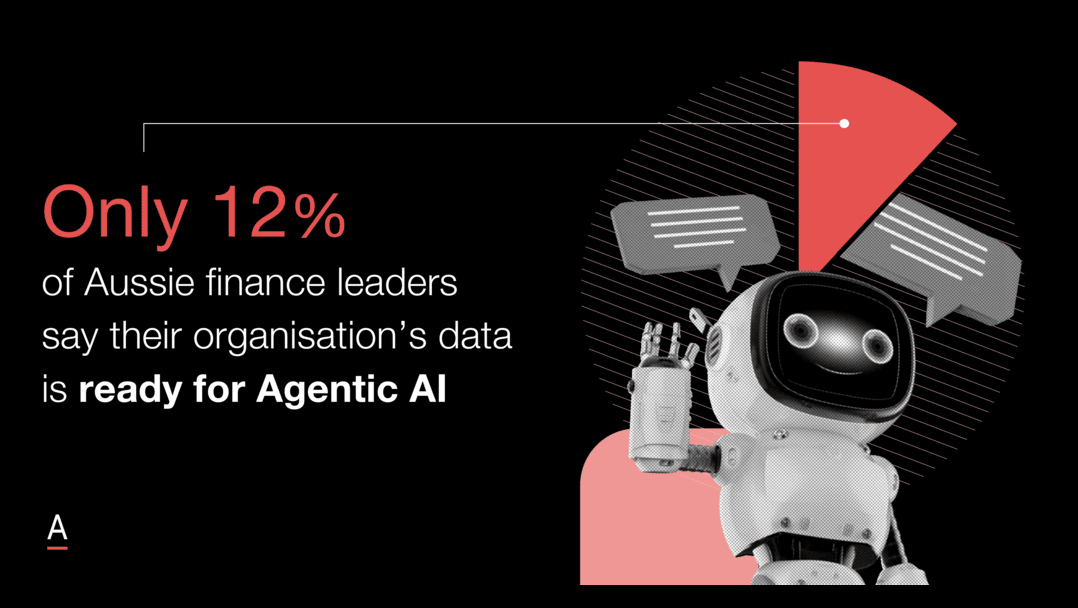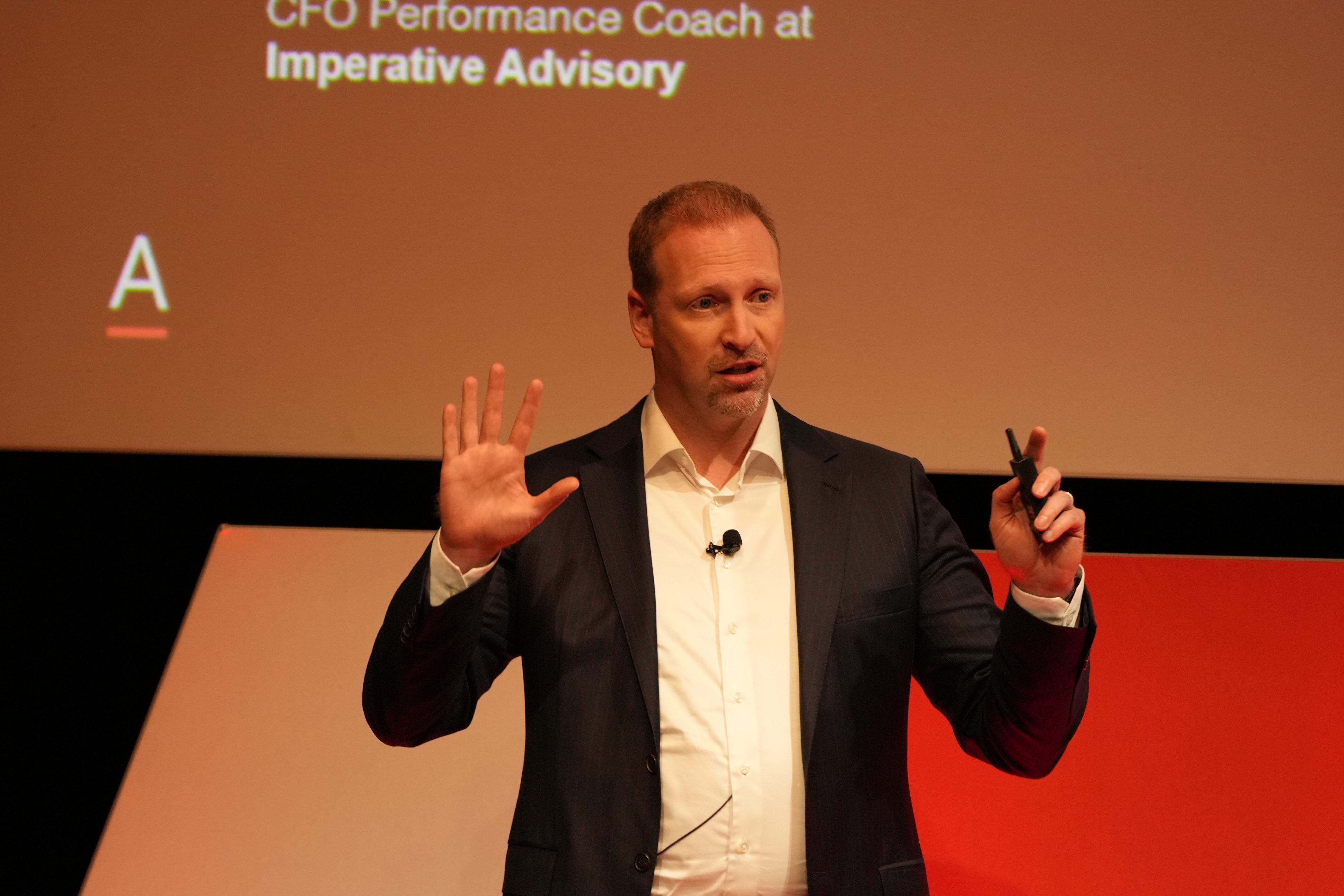Driving Change in Australian Finance through Digital Innovation
Explore how leaders in Australian finance are transforming the industry with digital innovation, customer focus, and agile practices for the future.
Technological advancement, shifting consumer expectations, and a steadfast pursuit of sustainable growth are at the heart of the Australian financial industry’s transformation.
This era of change is not merely altering operational methods within financial services; it is also providing an unparalleled opportunity to redefine their role in a digital world.
Insights from leading figures—from PayPal and UniSuper to DBS Bank and the Commonwealth Bank of Australia—shed light on the diverse strategies used to navigate these shifts.
Their shared wisdom marks a journey of adaptation, from deploying digital-first strategies to embedding agile methodologies at the core of business operations.
Their collective experiences unfold a narrative of transformation, driven by the necessity to modernise legacy systems and embrace cyber security, coupled with the goal to meet evolving customer needs directly.
Every challenge, cultural resistance or regulatory constraint is seen not as an obstacle but as a catalyst for innovation and resilience.
This rich collection of leadership thoughts, extending to the strategic actions of Macquarie Bank, Standard Bank Group, and Tyro Payments, offers an in-depth overview of the sector’s current state.
Despite facing a host of challenges, it depicts an industry that stands on the cusp of a renaissance, ready to leverage agility, innovation, and resilience to navigate towards a thriving, customer-focused future.
PayPal’s Agile Revolution Under Sri Shivananda
Sri Shivananda, who served as PayPal’s Executive Vice President and Chief Technology Officer, steered it through a critical transformation phase that realigned its infrastructure for the digital future.
Following PayPal’s separation from eBay in 2015, Sri orchestrated a strategic overhaul aimed at enhancing PayPal’s agility, security, and scalability to accommodate a rapidly expanding customer base and transaction volume.
At the core of this transformation was developing a ‘dream blueprint’ that prioritised security to foster trust, scalability to manage growth, and speed to ensure responsiveness.
This blueprint led to substantial infrastructure enhancements, including a new network backbone, establishing global edge locations, and shifting towards hybrid and public cloud setups.
Integral to these advancements was the adoption of zero-trust security architectures, ensuring robust protection of user data.

Sri’s vision extended beyond immediate technological upgrades. He focused on creating an agile architecture that would allow PayPal to serve its customers effectively and anticipate their needs.
Emphasising modularity and scalability, he drew parallels with industries known for their agile operations, advocating for a platform mindset that supports the seamless integration of emerging technologies.
An unobstructed vision for growth underpinned this strategic approach. PayPal aimed to increase its active customer base to 750 million and total payment volume to approximately $2.7 trillion (about $8,300 per person in the US) (about $8,300 per person in the US) within five years.
To achieve this, PayPal embraced agile principles across its operations, from product development to transaction processing, ensuring the company remained adaptable to regulatory changes and market demands.
Key Takeaway: Under Sri Shivananda’s leadership, PayPal has expanded its market reach and solidified its status as an innovator in the digital payment landscape.
Through strategic infrastructure enhancements and a commitment to agility, PayPal is poised to meet the evolving needs of its customers, setting new industry standards for operational excellence and security.
Praveen Miranda Refines UniSuper’s Project Selection and Execution
As the Head of Enterprise Delivery at UniSuper, Praveen Miranda leads the fund’s annual budgeting and project selection process.
He ensures that technological upgrades and systemic enhancements directly align with the fund’s objectives and enhance member value.
By establishing a framework for evaluating projects beyond mere IT upgrades, Praveen ensures resources are directed toward initiatives that offer substantial returns in terms of financial stability, cost efficiency, risk mitigation, and revenue generation.

His approach goes beyond traditional project management by prioritising projects that promise to boost financial outcomes and member satisfaction.
Key to his strategy is digitising member interactions to achieve engagement and personalisation that mirrors leading digital service providers, positioning UniSuper as a pioneer in member-focused digital transformation within the superannuation industry.
Key Takeaway: Praveen’s detailed project evaluation and prioritisation at UniSuper drives meaningful digital enhancements, fostering a member-centric service model that sets new benchmarks for the industry.
Paul Cobban Shapes DBS Bank with Digital Innovation and a Startup Mindset
Under Paul Cobban’s Chief Data and Transformation Officer stewardship, DBS Bank underwent a monumental shift, redefining itself from a traditional financial institution to a global leader in digital banking innovation.
This transformation was not merely about adopting new technologies; it was about a profound cultural change.
Paul envisioned and implemented a “30,000-person startup” mindset across DBS, focusing on agility, continuous learning, customer-centricity, and data-driven decision-making.
This ethos encouraged experimentation and risk-taking, pivotal in steering the bank towards its digital zenith.
DBS’s investment in cutting-edge technology and the simplification of processes boosted both operational efficiency and employee morale.

Inspired by Formula One’s real-time data analysis, the bank’s strategic focus on data revolutionised its decision-making framework, enabling more precise and faster resolutions.
One notable initiative was “Meeting Mojo,” aimed at enhancing meeting efficiency by promoting clarity in purpose and ownership, doubling productivity levels.
Paul’s approach to fostering a startup culture within the bank’s corporate confines further catalysed innovation and resilience, viewing failures as stepping stones to more impactful achievements.
The bank’s focus on leveraging technology not only to improve customer service but also to enrich the employee experience showed the intrinsic link between employee satisfaction and customer service quality.
By enhancing internal processes, DBS indirectly elevated its customer service standards.
Key Takeaway: Paul’s leadership at DBS Bank exemplifies how an agile mindset, innovative practices, and a data-driven approach can transform a traditional bank into a digital-first industry leader, establishing a new benchmark in the digital banking landscape.
Paul Silver Leads NAB’s Cloud Transformation with the Cloud Guild
Paul Silver has played a pivotal role at NAB, leading the bank’s strategic shift towards a cloud-first approach.
NAB innovatively established the Cloud Guild, recognising Australia’s critical gap in cloud engineering skills.
This in-house training and development initiative, aimed at enhancing the bank’s workforce in cloud technologies, directly tackles the talent shortage by optimising NAB’s internal capabilities instead of depending on external recruitment.
This strategy is central to NAB’s efforts to future-proof its operations, ensuring that the bank remains agile and competitive in the rapidly evolving financial sector.
By fostering a culture of continuous learning and adaptation, NAB positions itself to stay ahead of technological advancements.

In its migration to the cloud, NAB has prioritised security and regulatory compliance, incorporating sophisticated security measures and practices into its cloud infrastructure.
This approach ensures that the bank’s cloud-based solutions are supported by the highest data protection and compliance standards, which is crucial for maintaining trust and integrity in banking.
Leaders such as Yuri Misnik (CTO (Chief Technology Officer)) and Patrick Wright (CIO (Chief Information Officer)) have further advanced NAB’s cloud initiatives, promoting a vision combining technological expertise and strategic foresight.
Additionally, NAB’s engagement with academic institutions and the broader ecosystem through collaborations and internship programs underlines its dedication to creating a sustainable talent pool equipped with the latest cloud technology skills, preparing for future challenges and innovations.
Key Takeaway: Under the leadership of Paul, the Cloud Guild initiative stands as a fundamental element of NAB’s transformation into a digital-first bank, illustrating a comprehensive strategy that includes talent development, security, and visionary leadership to navigate the intricacies of cloud technology in the financial industry.
Dan Chesterman Transforms ASX with a Focus on Sustainability Reporting
Dan Chesterman, the Group Executive, Technology and Data, and CIO at the Australian Securities Exchange (ASX), has initiated a shift toward establishing ASX as a central hub for structured sustainability reporting.
His vision extends beyond typical technological upgrades, aiming for a profound impact on the ecosystem, including customers, supply chains, and partner networks.
Dan’s strategy meets the critical demand for agility and innovation in the competitive financial landscape, positioning ASX as a frontrunner in digital and sustainable transformation.
Responding to the increasing calls for transparency in environmental, social, and governance (ESG) metrics, Dan has set out to address the inconsistencies in sustainability reporting standards.
This effort is crucial as it simplifies and standardises ESG disclosures, enabling investors to make more informed decisions.
Under Dan’s leadership, ASX is boosting collaboration among various market participants, ensuring the extensive benefits of digital transformation are realised across the financial sector.
A fundamental aspect of Dan’s initiative is advancing educational programmes and harmonising sustainability reporting frameworks.

By guiding listed companies through these evolving standards and using ASX’s DataSphere platform, he enhances the accessibility and comparability of ESG data.
This effort equips investors with essential insights and improves market transparency and accountability.
Dan’s dedication to fostering a collaborative ecosystem has led to developing systems and processes that cater to the diverse needs of ASX’s stakeholders.
This strategy highlights the value of collective efforts and partnerships in achieving meaningful business outcomes, reaffirming ASX’s commitment to mutual growth and innovation.
At the heart of Dan’s leadership is the ambition to increase business value while promoting sustainability.
This dual focus illustrates how integrating digital transformation with sustainability practices can reduce risks and open new opportunities for stakeholder engagement and innovation.
Under Dan’s direction, ASX’s trajectory exemplifies the exchange’s pledge to balance financial performance with sustainable development goals, aiming for long-term industry resilience and leadership.
Key Takeaway: Dan’s forward-thinking leadership has positioned ASX as a global leader in sustainability reporting, highlighting the vital role of structured ESG disclosures in fostering a transparent, accountable, and sustainable financial industry.
Ashwin Sinha Guides Macquarie Bank Through Tech Upgrades
Under the guidance of Ashwin Sinha, Executive Director & Chief Data Officer, Macquarie Bank has taken a proactive stance towards technological upgrades.
Ashwin’s presentation highlights the bank’s dedication to staying ahead in the fast-evolving tech landscape through continuous learning and adaptation.
Two main priorities, improving data quality, processing speed, and strengthening risk management and compliance, are at the core of Macquarie Bank’s approach to digital transformation.
These priorities show a comprehensive understanding of how crucial precise and timely data is for decision-making and innovation and the need to meet regulatory requirements to protect against the risks present in a digital economy.
To meet these priorities, Macquarie Bank has implemented a broad strategy that ties digital transformation efforts to its data and technology objectives.
This strategy involves a move towards simplifying and modernising its data infrastructure.

By consolidating data warehouses and adopting cloud technologies, the bank aims to make operations more streamlined, less complex, and efficient.
Additionally, incorporating responsible artificial intelligence, focusing on customer benefits, explainability, and stringent risk management, reflects Macquarie Bank’s dedication to ethical and innovative practices.
Ashwin’s deep experience and strategic leadership provide a clear roadmap for Macquarie Bank’s approach and offer valuable insights across the Australian financial sector.
The bank’s focus on strategic alignment, data quality, and responsible technology use presents a unified method to tackle digital transformation challenges.
This approach ensures that Macquarie Bank stays at the leading edge of industry innovation, establishing a standard for excellence in the digital era.
Key Takeaway: Guided by Ashwin, Macquarie Bank’s commitment to data quality, risk management, and innovation marks a milestone for technological advancements in the finance industry.
CBA Leads Digital Innovation with Martin Anderson and Rachael Powell
The Commonwealth Bank of Australia (CBA) takes a focused approach to digital-first strategies, led by insights from its former senior executives Martin Anderson and Rachael Powell.
Confronting the ‘frozen middle’—domain specialists resistant to change—presents a massive challenge to CBA’s agility and comprehensive digital adoption.
In response, the bank has launched targeted education and transformation programmes to boost digital literacy among these specialists and cultivate a culture open to digital innovation.
At the heart of CBA’s strategy lies ‘positive deviance,’ highlighted by Rachael.
This concept encourages staff to constructively deviate from standard practices constructively, fostering an environment conducive to innovation and courage.
Such a mindset is critical in an industry marked by constant disruption.
The bank incorporates positive psychology principles into its operations, promoting innovative thinking and actions that spark breakthrough ideas.

Simultaneously, it is essential to tackle the ‘frozen middle’ through targeted training and highlight the real-world advantages of digital tools.
These initiatives aim to convert sceptical domain specialists into digital transformation advocates, ensuring their expertise contributes to the bank’s innovative projects.
Furthermore, utilising the digital expertise of its executive leadership allows CBA to effectively address the threats posed by digital disruptors.
Leadership knowledgeable about digital trends plays a crucial role in anticipating industry shifts, adapting quickly, and implementing innovative technologies like AI (Artificial Intelligence) and machine learning to stay ahead.
This commitment to continuous innovation and engagement with the latest digital trends through strategic partnerships and investments in tech startups asserts CBA’s leadership in digital banking.
The insights from the CIO panel, including Christopher Johnson, David Hogarth, Jakub Firek, and Claudine Ogilvie, further highlight the critical role of data in delivering substantial business value.
By adopting data-informed incremental improvements and aligning technology initiatives with business objectives, the focus on data-driven decision-making emerges as a critical strategy for success.
Incorporating customer-centric strategies, underpinned by data insights, into change management processes underscores the transformative power of a data-centric culture on operational efficiency, innovation, and competitive advantage.
Key Takeaway: CBA’s commitment to digital literacy and innovation establishes a new norm for the finance industry’s digital progression.
Arno Daehnke Drives Standard Bank’s Digital and Sustainable Evolution
Arno Daehnke, Group Chief Financial Officer at Standard Bank Group, outlines a visionary strategy propelling the bank to the forefront of Africa’s digital finance growth.
By transitioning over 95% of its transactions to digital, Standard Bank addresses the modern consumer’s preference for quick and efficient banking services, establishing a new benchmark for digital performance in the financial sector.
The bank’s strategic path is marked by a dual focus on profitability and adherence to environmental and social sustainability.
The shift towards cloud computing technologies has drastically reduced operational costs by 20-30%, while partnerships with solar energy firms underscore the bank’s dedication to sustainability.
These steps aim to improve customer experience and operational efficiency and minimise environmental impact, aligning with international sustainability objectives and consumer expectations for ethical business conduct.

Central to Standard Bank’s mission is reshaping the customer banking experience through innovative digital solutions.
Drawing on data regarding consumer behaviour and transaction patterns, the bank is crafting user-friendly digital platforms designed to transform how customers interact with financial services.
This emphasis on digital enhancement reflects the bank’s commitment to staying competitive in an ever-changing market, focusing on customer satisfaction and loyalty.
Standard Bank’s approach includes a strong commitment to sustainable growth and excellence in operations.
Investments in cloud technology and artificial intelligence streamline processes and cut costs.
At the same time, the bank’s engagement in sustainable practices and products reveals an in-depth understanding of sustainable development’s role in the current business environment.
Key Takeaway: Standard Bank’s dedication to digital innovation, sustainability, and operational efficiency is a prime example of leading Africa’s tech-driven financial expansion.
Dave Coombes Drives Innovation at Tyro Payments for SME Growth
Tyro Payments former CTO, Dave Coombes, tackles the industry-wide challenge of talent acquisition and retention head-on, making itself a destination for the tech-savvy professionals who drive finance innovation.
Achieved through a culture that champions personal growth, learning opportunities, and initiatives like Women at Tyro, this approach supports the company’s competitive edge and commitment to continuous improvement.
Central to Tyro’s strategy is the focus on technological innovation and ownership. By fully owning and developing its technology stack, Tyro secures the agility and adaptability needed to respond quickly to market changes and regulatory demands.
Such autonomy in technology development enables Tyro to offer unique, tailored services, particularly to small and medium enterprises (SMEs), maintaining a nimble approach unachievable for large, third-party platforms.

In-house development of core technologies, like payment switches and banking platforms, along with a strategic reassessment of its technology stack for optimisation, highlights Tyro’s dedication to differentiation and market responsiveness.
Empowering SMEs is a critical focus in Tyro’s strategy, showing a deep understanding of their unique financial needs and operational challenges.
Developing banking and payment solutions that synchronise with the rhythms and requirements of these businesses not only addresses a crucial market niche but also fosters strong customer loyalty.
This strategy positions Tyro as a partner in the growth and success of SMEs, moving beyond the traditional service provider role to become an essential part of their financial ecosystem.
Key Takeaway: Tyro excels by focusing on technology and talent to empower SMEs.
William Schafer Leads Auswide to Excel in Online Banking
Under the guidance of CFO William Schafer, Auswide Bank has embarked on digital transformation, embracing the challenges and harnessing the opportunities of the digital age with a singular focus.
Auswide’s strategy recognises the shifting consumer behaviours towards online banking, prompted by the pandemic and a decline in branch foot traffic.
This acknowledgment led to the prioritisation of digitising customer services, not as a mere adaptation to current trends but as a fundamental reshaping of the banking experience to meet evolving customer needs.
Central to executing this digital shift is the bank’s commitment to enhancing digital literacy among its clientele, ensuring that the move towards online platforms is inclusive and accessible to all customers.
Auswide Bank’s strategy extends beyond customer engagement, embodying a comprehensive approach that includes strategic investments in digital infrastructure and talent acquisition, recognising that the tools and expertise of its workforce are pivotal in navigating the digital finance landscape effectively.

Auswide’s approach is underpinned by a deliberate shift towards data-driven decision-making.
This strategic pivot empowers the bank to optimise operational efficiency and tailor customer service evaluations, leveraging analytics to inform and guide strategic decisions.
This data-centric strategy fosters a culture of proactive business continuity planning.
This foresight served the bank well during the COVID-19 crisis and highlighted the need for resilience and agility in operations.
In summary, Auswide Bank, under William’s stewardship, has articulated and implemented a comprehensive digital transformation strategy that prioritises customer-centricity, operational resilience, and strategic growth.
By focusing on digitising customer services, enhancing digital literacy, investing in technology and talent, and embracing data-driven insights, Auswide positions itself as a forward-thinking leader in the Australian financial sector, poised for sustainable growth and competitive differentiation in an increasingly digital world.
Key Takeaway: Auswide Bank redefines banking by focusing on digital literacy, data-driven decisions, and strategic resilience.
Vincent Pierce Shapes Westpac’s Digital Customer Experience
In an era where banking tradition intersects with technological innovation, Westpac’s transformation stands out, formerly led by Vince Pierce of Westpac Next.
This strategic overhaul transcends conventional technological upgrades, aiming to redefine the bank’s service delivery to meet the evolving demands of the digital age.
The journey involves:
- Overcoming the challenges of legacy systems.
- Centring development around customer needs.
- Leveraging continuous improvement and technology as critical pillars of change.
Westpac’s transformation journey addresses the substantial challenge of moving from a legacy-focused operation to an agile, customer-centric model.
Despite its rich history of over two centuries, the bank strives to shed cultural and technological inertia.
Vince’s approach includes engaging with employees personally and using journey mapping to incrementally enhance customer experiences, thereby facilitating a shift towards a more flexible, modular operational model.
At the heart of Westpac’s digital shift lies the detailed mapping of customer journeys, aligning product development with customer insights to identify and improve key interaction points.
This meticulous approach ensures the delivery of personalised, seamless banking experiences, which are crucial for customer loyalty and satisfaction in a competitive landscape.

Moreover, continuous improvement and the strategic adoption of technology underscore Westpac’s efforts to remain relevant and competitive.
By focusing on incremental enhancements and prioritising microservices, Westpac demonstrates a commitment to innovation and adaptability.
This commitment, coupled with the use of technology to improve accessibility and user-friendliness, contributes to a superior banking service that aligns with the dynamic needs of today’s customers.
Vince’s leadership highlights the critical role of a customer-focused approach, overcoming legacy system challenges, employing technology and continuous improvement as drivers of modern banking services.
Westpac’s journey under Pierce’s guidance provides a blueprint for the financial sector, illustrating the power of embracing change and focusing on customer satisfaction for sustainable growth and differentiation in the digital age.
Key Takeaway: Westpac boosts digital services, making banking more accessible and responsive to customer needs.
Conclusion
The transformation of the Australian financial industry is driven by embracing modern technologies, adapting to changing consumer expectations, and striving for sustainable growth.
Leaders from Westpac, Auswide Bank, ASX, and other financial institutions demonstrate the sector’s dynamic shift towards a digital-centric approach.
Their strategies, focusing on modernising operations, enhancing cyber security, and prioritising customer needs, illustrate a pathway from traditional banking to agile, innovative financial services.
This collective movement towards digital optimisation represents the industry’s broader evolution, positioning Australian finance for a customer-focused, technologically advanced future.

























